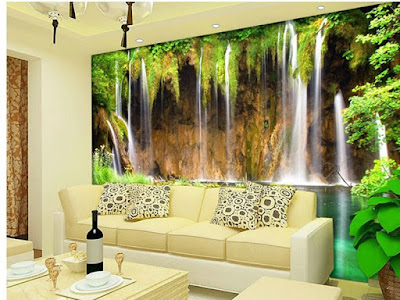Scientists have developed new moth-inspired, ultra-thin graphene sheets which can be used in 'smart wallpaper' that could generate electricity from waste light or heat, and power a host of applications at home.
Using a technique known as nanotexturing, which involves growing graphene around a textured metallic surface, researchers from the University of Surrey in UK took inspiration from nature to create ultra-thin graphene sheets designed to more effectively capture light.
Just one atom thick, graphene is very strong but traditionally inefficient at light absorption.
To combat this, the team used the nano-patterning to localise light into the narrow spaces between the textured surface, enhancing the amount of light absorbed by the material by about 90 per cent.
"Moths' eyes have microscopic patterning that allows them to see in the dimmest conditions," said Ravi Silva, Head of the University of Surrey's Advanced Technology Institute.
"These work by channelling light towards the middle of the eye, with the added benefit of eliminating reflections, which would otherwise alert predators of their location," he said.
"We have used the same technique to make an amazingly thin, efficient, light-absorbent material by patterning graphene in a similar fashion," he said.
Graphene has already been noted for its remarkable electrical conductivity and mechanical strength.
Researchers understood that for graphene's potential to be realised as material for future applications, it should also harness light and heat effectively.
"Solar cells coated with this material would be able to harvest very dim light," Silva said.
"Installed indoors, as part of future 'smart wallpaper' or 'smart windows', this material could generate electricity from waste light or heat, powering a numerous array of smart applications," he said.
"New types of sensors and energy harvesters connected through the Internet of Things would also benefit from this type of coating," he said.
Graphene is only able to absorb a small percentage of the light that falls on it making it unsuitable for the kinds of optoelectronic technologies our 'smart' future will demand, said lead author Jose Anguita of the University of Surrey.
"Nanotexturing graphene has the effect of channelling the light into the narrow spaces between nanostructures, thereby enhancing the amount of light absorbed by the material," said Anguita.
Graphene is traditionally an excellent electronic material, but is inefficient for optical applications, absorbs only 2.3 per cent of the light incident on it.
The new technique enhances light absorption by 90 per cent across a broad spectrum, from the UV to the infrared.
The study was published in the journal Science Advances.



No comments:
Post a Comment